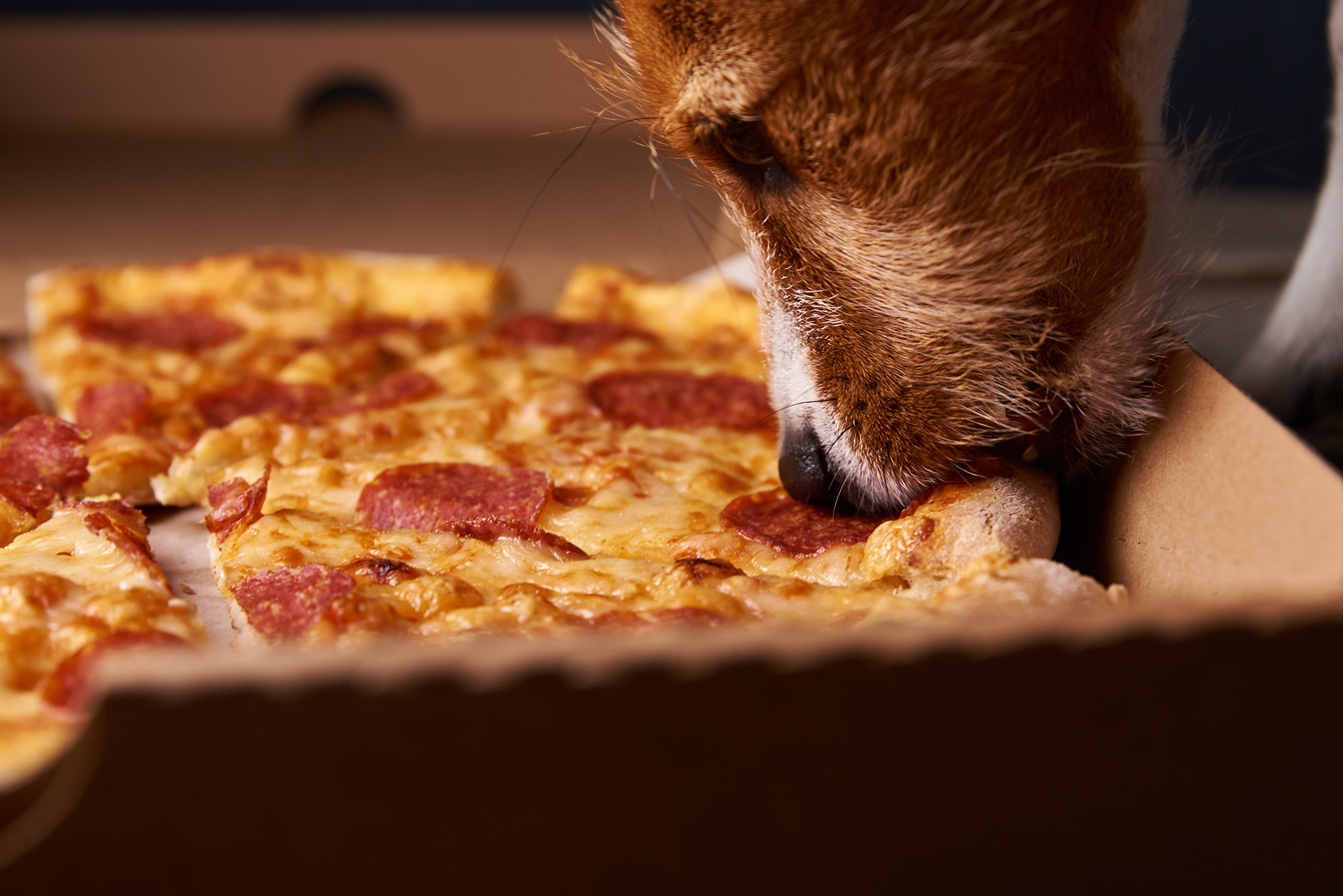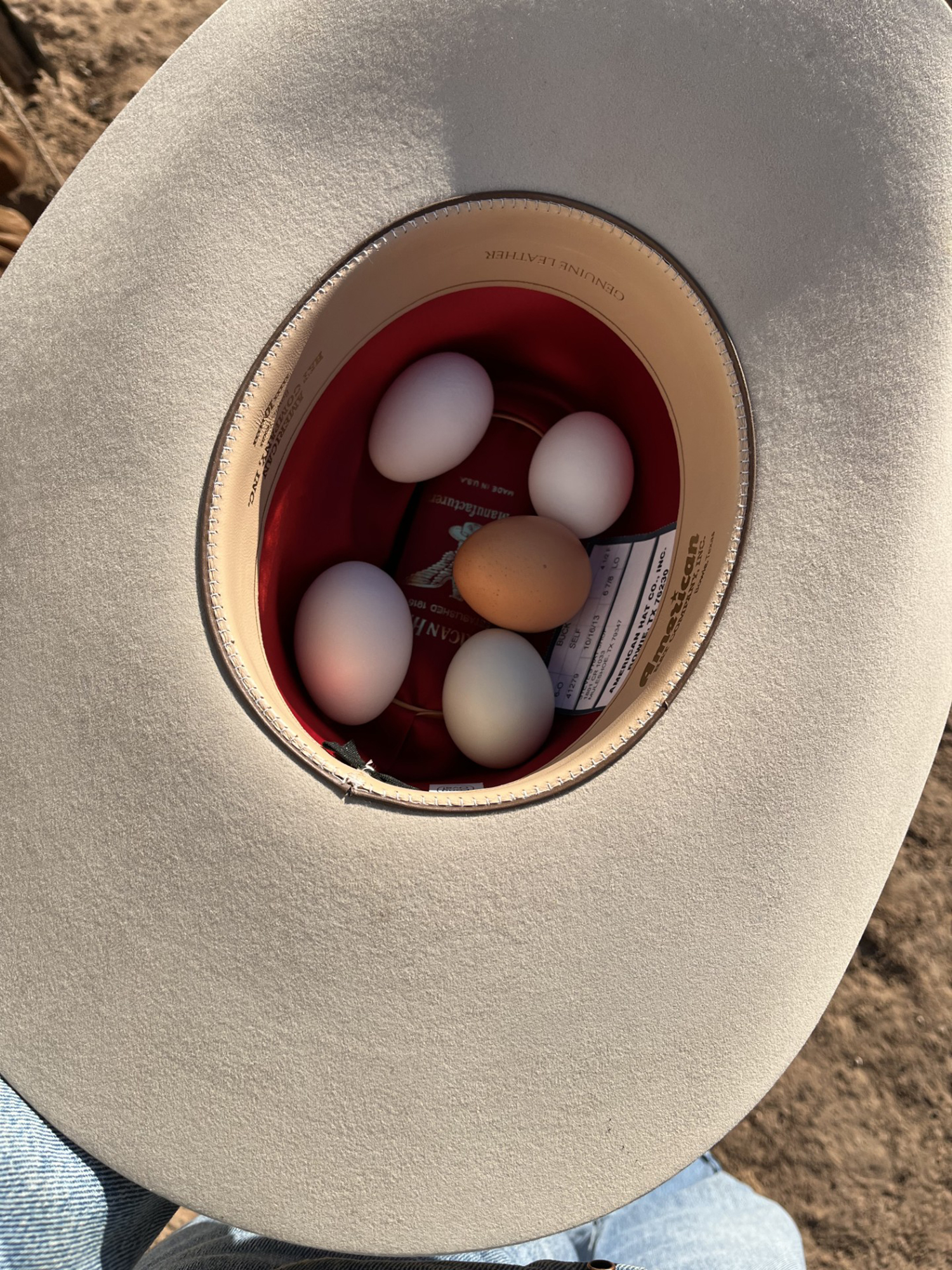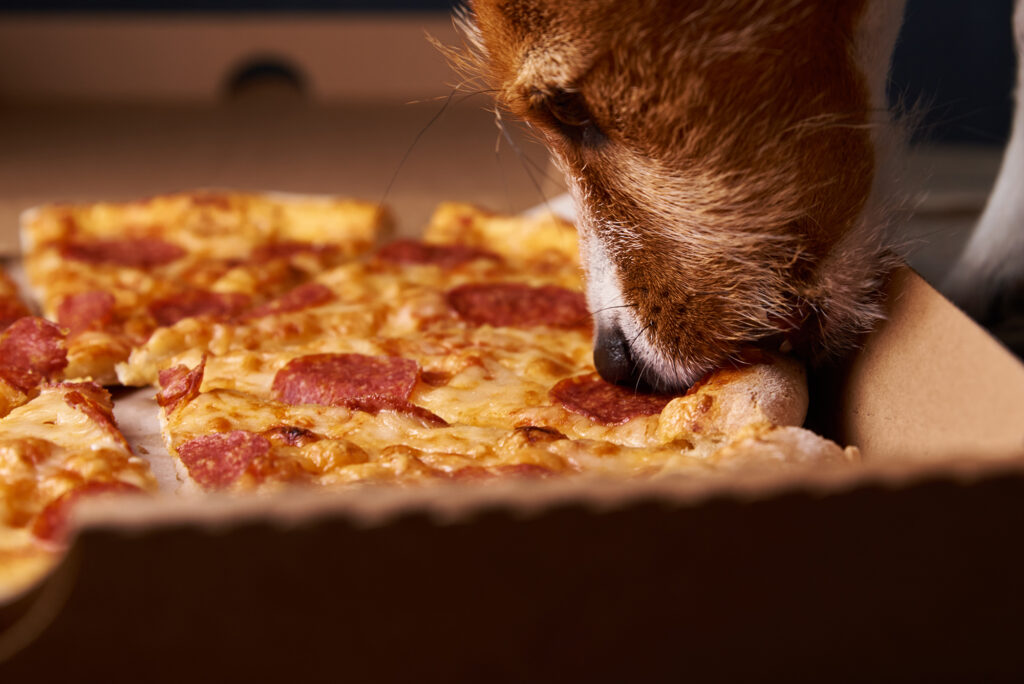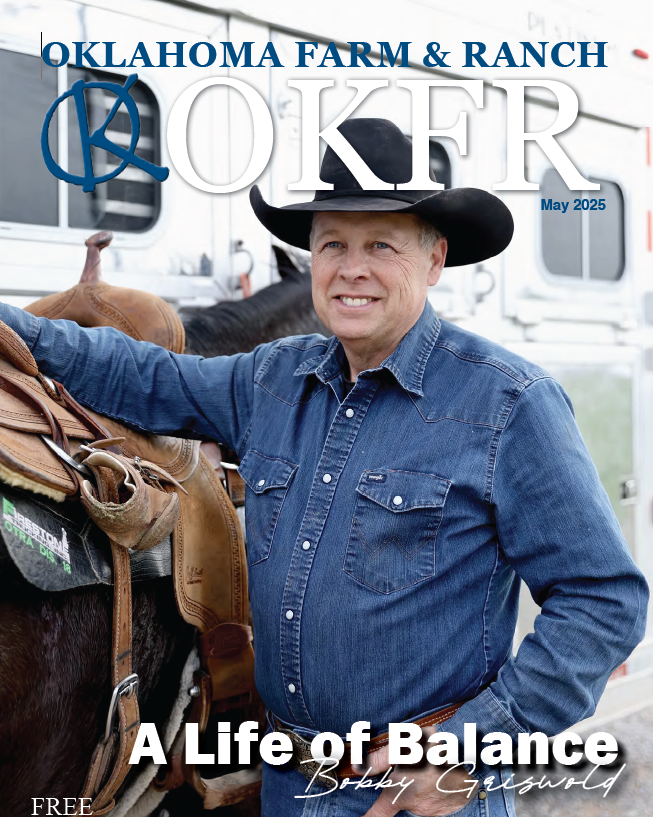Country Lifestyle
Christmas 1990

By
Barry Whitworth, DVM
Area Food/Animal Quality and
Health Specialist for Eastern Oklahoma
It was Christmas eve. I was closely monitoring the clock, counting down the minutes until I could head home. The boss had talked about closing the clinic down early, and I was ready. My wife and new 9-month old daughter were waiting for me to get off work so we could begin our holiday celebrations.
In the midst of my Yuletide daydreaming, I heard the sound of the boss drive up to the clinic. He motioned for me to get in and silence filled the truck for a moment. Finally, the boss broke the quiet, “Barry, I think it’s time for you to ‘get on down the road’.” When he said, ‘get on down the road’, he was not talking about a farm call. He was firing me on Christmas Eve.
As I stepped out of the pickup and walked back in the clinic, my mind was racing with the reality of being jobless. I should have seen this coming. In fact, in the 8 months that I had worked there, my boss and I had never been on the same page. I had actively been searching for another job, a fact that I never hid from him. I left that day with a sense of defeat heavy in my chest. I prided myself on being an excellent employee. In my whole life I had never lost a job. I was accustomed to getting pay raises and praise from my employers. Instead, that day I was getting a pink slip to take home to my family for Christmas.
As I begin my drive home, fears, doubts, and anxieties began to make themselves at home in my mind. A sea of questions began to rush in, “Would I ever get another job?” “What would potential employers think when they found out I had been fired?” “Was I cut out to be a veterinarian after all?” My confidence was wounded, and I felt inadequate. The classmates I had studied and trained with over the past four years seemed to be breezing through their first year with no hiccups; yet, I had met many obstacles during my first job. Deep down inside, I felt like an embarrassment to my alma mater.
I rounded the corner and the small trailer that we had called home over the past eight months was in site. The truck rolled to a stop, and I paused a moment to collect my thoughts before heading inside to break the news to my wife. The holiday scents and sounds greeted me as I opened the door. My wife had been preparing all day for our first Christmas with our new baby. She turned to welcome me home with a cheerful face, but she knew instantly that I did not bring good news. Tears began to flow when I told her that I had lost my job. Together we began to wonder how we would make it. It was not just the two of us anymore. We had our baby girl to worry about, too. How would we take care of her? What if she got sick? In reality, neither my parents or my in-laws would then or now ever let their granddaughter go without, but in the moment the fears were very real. We sat contemplating the future full of worry, and the joys of Christmas Eve seemed to drift somewhere far away.
Following our family’s Christmas celebrations, I returned to the clinic to turn in my equipment and pick up my final check. My employer and I parted as best we could, and then I ‘headed down the road’ to somewhere I did not know.
One morning as I sat at home updating my résumé, the phone rang. I stopped working and answered the phone. The person calling was Bill Booth. He said, “I was wondering if you would bleed some pigs for some of the kids in the local 4H and FFA program.” Shocked that he had not heard the news, I politely informed Bill that I no longer worked for the veterinary clinic and gave him the number to get a hold my previous employer. I am not sure if the next words out of Bill’s mouth were said simply because he felt sorry for me or out of compassion, but they are words that I will never forget. “I did not ask another veterinarian to bleed the pigs. I ask if you would.” I was grateful at the thought of making a little money since I had none coming in, but the impact of his call was of greater value to me. At that moment in my career, those words reassured me of my abilities and worth. Someone still believed that I was capable. Someone still believed that I had what it took to be a veterinarian.
Over the course of my almost 30 years in veterinary medicine, I have worked for many clients, and I have bled hundreds of pigs. None were as memorable or as important to me as the ones I did that day so early in my career. Bill’s willingness to reach out and ask me to care for his animals re-instilled in me the confidence that had been wounded and shaken. I am forever grateful for the kindness that he showed me.
Bill passed away a few years ago. Upon his death, I relayed to his family how much him giving me that pig bleeding job had meant to me as a young struggling veterinarian. I told them that one of my biggest regrets was that I never properly thanked him for extending such kindness to me when I needed it the most. Over the years, I have had many wonderful clients that have touched my life and given me the opportunity to make a living doing what I love. You, too, have stories like mine. Stories of a time when someone reached out in kindness to pick you up when you were down. My hope for you is that this holiday season you would take the time to thank those special people in your life and as well be an encouragement to someone in need.
From my family to yours, may you have a Merry Christmas and Happy New Year.
Read more in the December issue of Oklahoma Farm & Ranch.
Country Lifestyle
Farm Dogs & Table Scraps

What’s Safe and What’s Not?
Growing up on a farm, our dogs were tough. They roamed the pastures, slept under the barn, and ate just about anything they could get their paws on—whether we meant for them to or not. I’ll admit, I never thought twice when one of our old cow dogs snatched a biscuit off the table or licked up a spill from the barn floor. I’ve even seen a dog steal a whole rib bone off a plate and trot off like he’d won the lottery. And somehow, they always seemed fine.
But here’s the thing—just because they survived doesn’t mean it was safe. For every farm dog that lucked out, there’s another that wasn’t so fortunate. Some human foods can be downright toxic to dogs, and a little bit of bad luck (or a smaller, more sensitive dog) can turn a harmless snack into an emergency.
Common toxic foods lying around the farmhouse
If you’ve got a farm dog—or any dog, really—you need to be aware of the dangers lurking in everyday foods. Some of the biggest culprits include:
Chocolate – The darker it is, the worse it is. Even a little can cause vomiting, seizures, or worse.
Grapes & Raisins – No one’s exactly sure why, but they can cause kidney failure fast.
Onions & Garlic – In large enough amounts, these can destroy red blood cells, leading to anemia.
Xylitol (Found in Sugar-Free Gum & Candy) – This artificial sweetener can send a dog’s blood sugar crashing and cause liver failure.
Alcohol – Even small amounts can be deadly to dogs, affecting their nervous system much more than it does ours.
Bones from Cooked Meat – While not necessarily toxic, they can splinter and cause serious internal injuries.
Macadamia Nuts – These can lead to weakness, vomiting, and even paralysis in dogs.
What to do if your dog eats something toxic
First, don’t panic—but don’t ignore it either. If you know your dog ate something dangerous, call your vet immediately. They can tell you whether to induce vomiting or if it’s something that requires urgent care. If it’s after hours, contact the ASPCA Animal Poison Control Center (888-426-4435) or the Pet Poison Helpline (855-764-7661).
Prevention is always the best medicine, so keep toxic foods out of reach. That might mean keeping the trash can secured, making sure kids don’t slip the dog a treat under the table, or just being more mindful of what’s left on the counter.
Our farm dogs might have been lucky, but luck isn’t a great strategy when it comes to their health. A little awareness goes a long way in making sure they stay happy, healthy, and ready for the next day’s work.
For more information
ASPCA Animal Poison Control: www.aspca.org/pet-care/animal-poison-control
Pet Poison Helpline: www.petpoisonhelpline.com
Visit www.akc.org/expert-advice/nutrition/foods-your-dog-should-never-eat
Country Lifestyle
Summer Squash and Corn Chowder

By Lacey Vilhauer
Total time: 40 minutes
Servings: 6-7
Ingredients
- 6 slices bacon, cooked and crumbled and 1 1/2 Tbsp rendered bacon fat reserved
- 1 1/2 lbs yellow squash, chopped (about 3 medium)
- 2/3 cup thinly sliced celery
- 1 cup diced onion
- 1 Tbsp flour
- 2 cloves garlic, minced
- 2 3/4 cup milk (I used 1%)
- 5 cups canned or fresh cut corn (from about 6 ears corn), divided
- 1/2 cup heavy cream
- 1 1/2 tsp chopped fresh thyme (or 1/2 tsp dried)
- 3/4 tsp salt, then more to taste
- 1/4 tsp freshly ground black pepper, then more to taste if desired
- 3/4 cup shredded cheddar cheese, for serving
- Chopped green onion for garnish (optional)
Instructions
Heat 4 tsp reserved bacon fat in a large pot over medium-high heat. Add celery and onion and sauté 2 minutes then add the squash.
Saute until tender, about 6 minutes, adding in garlic and flour during last 2 minutes of sauteing. Reduce heat slightly.
Add 1 1/2 cups milk, 2 cups of the corn, thyme, salt and pepper to the sauteed veggies.
To a blender add remaining 3 cups of corn, remaining 1 1/4 cups milk and the cream. Process in blender until nearly smooth (about 30 seconds).
Add pureed mixture to pot and stir to blend. Cook until mixture reaches a light boil.
Serve warm with shredded cheese, crumbled bacon and sliced green onions if desired.
Country Lifestyle
Western Housewives – May 2025

By Summer McMillen
All my married life I have thought that when husbands all got together horseback after a hard days work they were probably rating their wives on a scale from one to ten based on their various capabilities. Did Wife A have a good hat crease? Was Wife B good help in the branding pen? Was Wife C an excellent mother? Was Wife D hospitable to everyone? Could Wife E make a decent gallon of sweet tea? Did Wife F keep a tidy saddle house?
Presumably, when Wife B did not live up to Wife A there was a fist fight followed by wife shaming of Husband B. His status amongst the cowboys immediately fell and he would be behind for the rest of his life in his cowboy career.
He would come home ashamed his wife couldn’t flambé a decent bananas foster and she couldn’t hoolihan either. He would be distraught and said wife would feel his pain.
Of course, this never happened to me like I thought it would. My husband always came home with a smile on his face and I’m pretty sure “flambé” isn’t even in a cowboys vocabulary.
Nonetheless, these imaginary fights and social rankings have plagued my brain for years. It has caused me to always be in competition with myself to be the very best at everything I did. Which I have eventually realized is a trait of women all around the world.
While we are cooking a four course meal for our families we start to think about how we actually should be practicing heading steers instead.
While we are practicing our horsemanship we start to think about how we should actually be preparing a nutritious and elaborate meal for our families.
It is a constant battle that women have created and proceeded to fight for centuries.
One day the inner battle got to me and I finally broke down as we were riding wheat pasture and confessed to my husband my guilt. I was so sorry that I wasn’t a better cowgirl. I was so sorry that the house was a mess. I was so sorry that I would never be on The Cowboy Channel. I was so sorry that I had lost his good pair of gloves. (Except I didn’t actually mean to confess that last part. Some things are just better left unknown.) I apologized again and again and told him I was sorry and he probably never wanted to bring his friends over for supper ever again.
Instead of consoling me, he just started looking at me like I was crazy. Which is what all good husbands do.
He stopped his horse and looked at me and said “Do you know how cowboys rate each other’s ranch wives?”
So many thoughts started filling my brain. Was it looks? Gentleness? Laundry speed? Work ethic?
Then he revealed their secret. “Cowboys rate each other’s wives by how well they can cook eggs for breakfast.”
His point of course, was that men don’t think about each other’s wives. As long as they get their eggs for breakfast. In another twist of irony, my husband taught me how to fry the perfect egg. What can I say? It’s a man’s world.
Since then, I have let go of my irrational fears and doubt and have simply been living life. It’s all anyone can do. I may not team rope the best. I may get my fingers when I’m trying to dally and I may not have the tidiest saddle house. But I try hard at everything I do and I do it all out of love for my family and finally, myself.
So, if you’re a woman this Mother’s Day and you catch yourself feeling down amongst life constant pressures just remember you are not alone. You can almost guarantee there is a woman in every household that needs a little pick me up. Maybe you should just go outside. Maybe you should sit down and count your blessings. Or, maybe you should have your husband fry you some eggs.
-

 Attractions8 years ago
Attractions8 years ago48 Hours in Atoka Remembered
-

 Country Lifestyle9 months ago
Country Lifestyle9 months agoJuly 2017 Profile: J.W. Hart
-

 Country Lifestyle9 years ago
Country Lifestyle9 years agoThe House a Treasure Built
-

 Country Lifestyle3 years ago
Country Lifestyle3 years agoThe Two Sides of Colten Jesse
-

 Outdoors7 years ago
Outdoors7 years agoGrazing Oklahoma: Honey Locust
-

 Equine8 years ago
Equine8 years agoUmbilical Hernia
-

 Outdoors5 years ago
Outdoors5 years agoPecan Production Information: Online Resources for Growers
-

 Farm & Ranch7 years ago
Farm & Ranch7 years agoHackberry (Celtis spp.)





